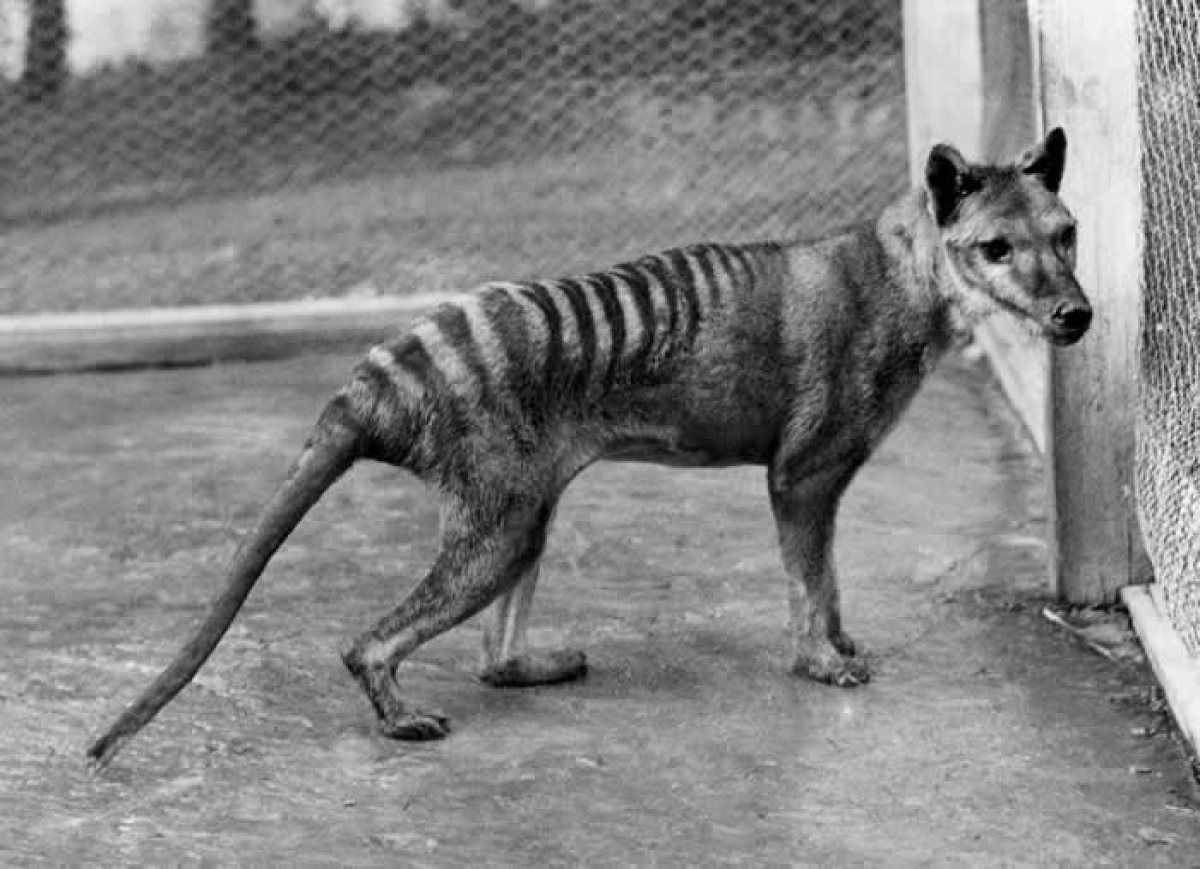
Updated | Footage claiming to show a Tasmanian tiger living in the wild has been released 35 years after it was declared extinct by the International Union for Conservation of Nature (IUCN).
The grainy footage was filmed in the Tasmanian wilderness in November last year by Adrian Richardson, Greg Booth and his father George Booth, who kept the location secret to prevent others from seeking out the animal, Tasmanian newspaper The Mercury reports.
Richardson, who has been searching for the creature, also known as a thylacine, for 26 years, told the newspaper: "I don't think it's a thylacine ... I know it's a thylacine."
Others are less convinced, however. Wildlife conservationist and biologist Nick Mooney, who is known for his work with the Tasmanian devil, said he thinks he chances of the animal seen in the film being a thylacine are around one in three.
James Cook University Professor Bill Laurance, who is part of a team looking for living Tasmanian tigers, tells Newsweek the animal in the footage looks more like a red fox—"insofar as one can tell from the blurry imagery."
"Red foxes are not supposed to be in Tasmania but they are widespread in southern Australia and have evidently been reported on rare occasions from Tasmania—though it's illegal to own or import one there," he says.
Viewers were also highly skeptical of the footage, with commentators noting that the creature is barely distinguishable, and that the footage is too blurry and distant to make out what animal it is. Some also pointed out the film was released a few days before the anniversary of the death of the last captive Tasmanian tiger.
The animal, known as Benjamin, was a male that was trapped in 1933 and placed in Hobart Zoo. It is thought to have died as a result of neglect. A video of the animal pacing inside its enclosure shot by naturalist David Fleay in 1933 is believed to be the last confirmed footage.
Since Benjamin died on September 7, 1936, there has been no official sighting of a Tasmanian tiger. In 1982, the species was declared extinct—as there had been no proof of the thylacine's existence in the wild for over 50 years.
This has not stopped widespread speculation that the species still exists in the wild and over the years there have been many unconfirmed sightings and footage.
Thylacines were the largest known carnivorous marsupial that lived in modern times. They are believed to have been shy, nocturnal animals about the size of a medium to large dog. Endemic to Australia, Tasmania and New Guinea, they got the name Tasmanian tiger because of the stripes on their lower backs.
The only scientific search for the Tasmanian tiger is currently being undertaken by researchers at James Cook University in Queensland, Australia. The hunt involves 50 camera traps positioned around the Cape York Peninsula in north Queensland, where two people had previously provided detailed sightings of animals that could be thylacines.

"One of those observers was a long-time employee of the Queensland National Parks Service, and the other was a frequent camper and outdoorsman in north Queensland," said Laurance, who is co-investigator on the project.
"All observations of putative Thylacines to date have been at night, and in one case four animals were observed at close range—about 20 feet away—with a spotlight. We have cross-checked the descriptions we received of eye shine colour, body size and shape, animal behavior, and other attributes, and these are inconsistent with known attributes of other large-bodied species in north Queensland such as dingoes, wild dogs or feral pigs."
This story has been updated to include quotes from Bill Laurance.
Uncommon Knowledge
Newsweek is committed to challenging conventional wisdom and finding connections in the search for common ground.
Newsweek is committed to challenging conventional wisdom and finding connections in the search for common ground.
About the writer
Hannah Osborne is Nesweek's Science Editor, based in London, UK. Hannah joined Newsweek in 2017 from IBTimes UK. She is ... Read more
To read how Newsweek uses AI as a newsroom tool, Click here.








